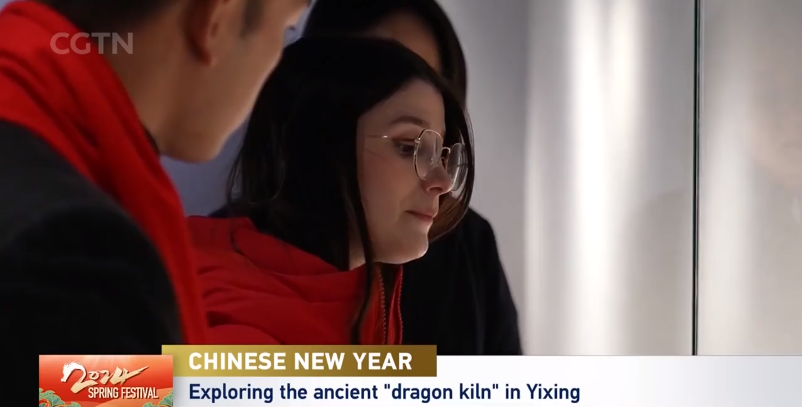Press Contact
SISU News Center, Office of Communications and Public Affairs
Tel : +86 (21) 3537 2378
Email : news@shisu.edu.cn
Address :550 Dalian Road (W), Shanghai 200083, China
Further Reading
Chinese New Year: Exploring the ancient 'dragon kiln' in Yixing
15 February 2024 | By SISU Global | CGTN

Yixing in east China's Jiangsu Province is famous for its purple clay teapots. But you may not know that an ancient kiln is still being used to fire the pottery - more than 600 years after it was first built. Local people call it the dragon kiln. Wu Bin takes a friend to explore the site.
- Hello. I'm CGTN reporter Wu Bin.
- Hello. I'm Victoria from Brazil. Today we are in Yixing, Jiangsu.
- And we're coming here to find dragons in the city.
- But we're in a village. Where are the dragons?
- Right. For the dragon today, it needs some clever eyes to find it.
- Let's go!
The dragon we're looking for today is in fact an ancient kiln. Local people call it a living dragon kiln. It's mainly used to make the purple clay teapots that the city has become known for. The structure was built over 600 years ago, and has been used ever since.
From above, it does look like a dragon crawling on the hill. And inside its belly, thousands of ceramic and porcelain products are fired at temperatures that can reach over 1200 degree Celsius.
We followed Hua Sheng, known in China as a cultural inheritor, to take a closer look.
Inheritor: You can feel the temperature here.
Victoria: Very hot. Like, I was burning actually.
We then go to the other side and find people are adding wood to the kiln. The aim is to quickly increase the temperature. Then the kiln will be sealed to maintain the temperature for around one week. It's one of the few kilns in China that still use traditional methods. And that makes the final products unique.
HUA SHENG, Cultural Inheritor, Qianshu Dragon Kiln "After the fire started, it would leave marks on the pottery. That's why the final products are different. We say in the past, 'there are thousands of colors in one kiln."
VICTORIA ALMEIDA, Professor of Brazilian Studies, Shanghai International Studies University "I knew that ceramics must go to this process, but I never saw it with my own eyes. I’m very impressed by it."
Yixing is known as the capital of pottery. To learn more about the dragon kiln, we visit the city's ceramics museum. There, we also find many dragons featured on ceramic products made in Yixing, some dating back more than 2,000 years. The museum also houses a replica of the dragon kiln.
JIANG LIYAO, Narrator, China Yixing Ceramics Museum "We call it the whole kiln site. From excavating the raw materials, to making different potteries, like utensils, and after making and drying the potteries, we put them in the kiln to fire them. And then use the ships for trading."
Pottery using Yixing Purple Clay has drawn people from around the world to the city. And Victoria has also found a piece of pottery from Brazil.
VICTORIA ALMEIDA, Professor of Brazilian Studies, Shanghai International Studies University "I'm amazed to see the work of art here, and to see that Brazil and China and Brazil already had connections in the past and we have artists in Yixing to get to know more about purple clay culture, and to see their work for cultural communication."
For Victoria, visiting Yixing was revealing. And she hopes the city's ceramics tradition could feature in more international exchanges, especially as Brazil celebrates 50 years of diplomatic ties with China. Wu Bin, CGTN, Yixing, Jiangsu Province.
Press Contact
SISU News Center, Office of Communications and Public Affairs
Tel : +86 (21) 3537 2378
Email : news@shisu.edu.cn
Address :550 Dalian Road (W), Shanghai 200083, China

